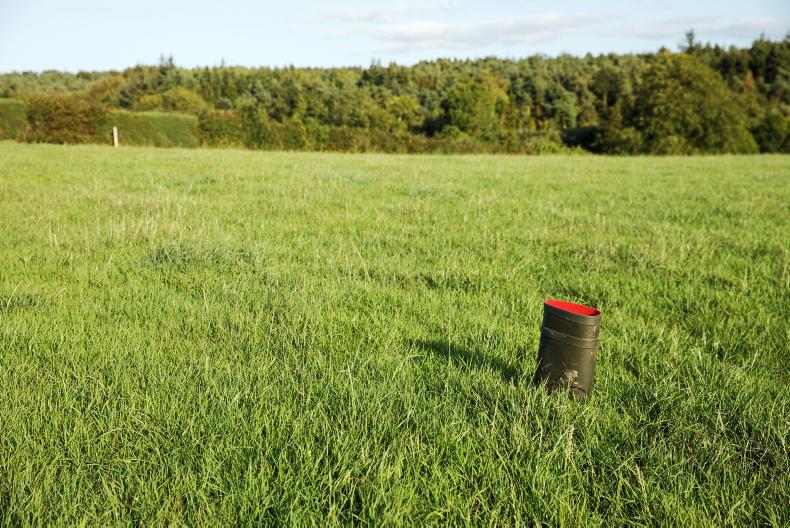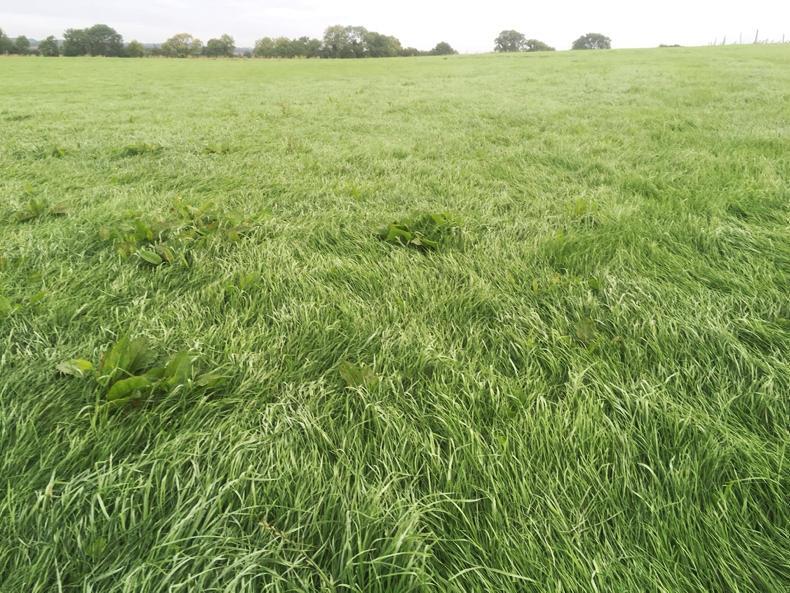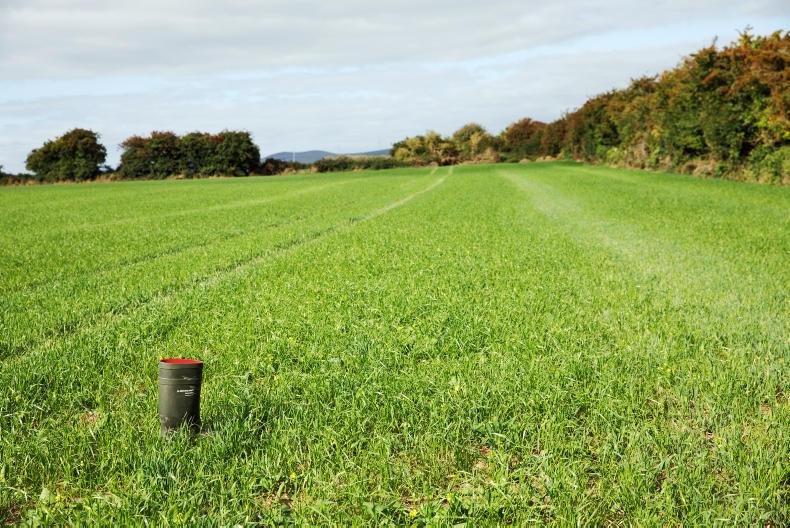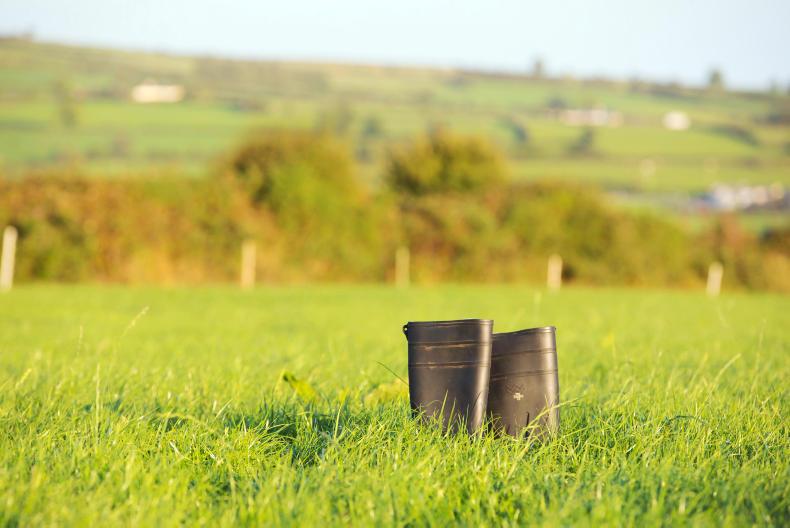Most of the country is experiencing good growth rates, with grass and fodder crops flying it. Growth rates are a function of leaf area. Plants get energy from the sun through their leaves, so the more leaves they have, the more sun they trap and the more energy they will have for growth. That’s why grass grows fastest just before it is cut or grazed and growth is slowest after grazing or cutting.
However, we see that grass growth rates are averaging 55kg/day around the country, which is 10kg/day below normal for the time of year.
This is because some areas are still in a soil moisture deficit and are struggling to grow enough grass to feed the herd, never mind build up covers.
It’s a heartbreaking situation as everyone in these areas needs growth rates to be higher than normal to reduce the amount of purchased feed being fed and preserve more winter feed.
Many parts of north Cork, Limerick, Tipperary and Carlow/Kilkenny are still growing less than normal and this is bringing down the average growth rates. For farms that are growing well, taking out surplus grass for silage should be the priority.
There have been reports of some very high nitrates in grazed swards, with nitrate levels off the scales.
After the drought, there was a big mineralisation of nitrogen so it’s better to get it checked out before cutting.
If high, a good wilt will increase the dry matter and offset the risk of preservation issues.
But keep this in mind before deciding to top up nitrogen on ground closed for silage now.
Rathcormac, Co Cork: Third-cut silage
Growth has picked up near Fermoy after some rain over the last week.
The fields that have been closed for silage for the last seven weeks or so are beginning to bulk up but are still only around the 1,500kg DM/ha mark. Despite getting between 65 and 70 units/acre of nitrogen, the growth just hasn’t been there over the last few weeks.

Rathcormac. \ Donal O' Leary
The hope now is that grass will drive on for the next three weeks and that the Kearneys will get a good cut by the end of the month. However, nights have gotten cold and this is a concern for Jack Kearney.
Tullamore Farm, Co Offaly: Fodder crop on a livestock farm
The crops of interval and redstart hybrid rape are really flying it.
They are both sown in the same field and managed the same. So far, interval seems to be performing a bit better. Two varieties were sown because there wasn’t enough seed available to sow all the field with one.
The plan is to graze this over the winter with heifers. The plants are filling out nicely with five or six leaves on every plant and growth vigorous. Nothing has been done to the crop since sowing.
Midlands: Buying third-cut silage
Good rainfall levels and warm humid weather over the past week are really driving on grass on this farm near Mullingar.

Third cut in midlands.
The grass is being grown for a farm in Kilkenny. There is a cover of over 1,800kg/ha on the field now and it has been growing in excess of 80kg/day over the past week.
If this growth continues, there will be a cover of over 3,500kg/ha by cutting at the end of the month which should yield over six bales/acre.
Doneraile, Co Cork: Growing grass on a tillage farm
The Westerwolds grass on John Stokes’ tillage farm in north Cork is going well.
Despite the fields only getting between one-third and half of the normal rainfall for August at 35mm, the crop is filling out well and John says the growth over the last week has been remarkable.

Doneraile.
John used a selective herbicide to spray off some areas where charlock and fat hen were established. John has Italian ryegrass sown on other land but this was sown a week later into ploughed ground and is not doing as well. He hopes to cut the Westerwolds in three weeks’ time.
Athy, Co Kildare: Growing a fodder crop on a tillage farm
With around 10mm of rain falling over the past two weeks, there has just about been adequate moisture levels for development of Michael’s redstart.
However, a good cover is developing but about 15% of the crop has been lost to volunteer barley. Michael intended for the cop to be zero-grazed which meant that he had to pick stones from the field. When labour and machinery is taken into account, this cost around €7-8/acre. It now looks as if the crop will be grazed rather than cut .
Bunclody, Co Wexford: Spreading more fertiliser on a livestock farm
Growth is excellent on John Doyle’s tillage, sheep and cattle farm in Wexford. Grass has all the ingredients for growth – heat, moisture and sun. John recorded growth rates of over 70kg/day for the last week.

John Doyle's Farm at Ballinacoola, Co Wexford. \ Patrick Browne
He made the decision last week to top up his silage fields with one bag/acre of 18:6:12. The 18 units of nitrogen will be there for the grass now, while the P&K will be there after cutting in two or three weeks’ time. John has rape sown and this is thriving but turnips are about a month behind where they should be.
Most of the country is experiencing good growth rates, with grass and fodder crops flying it. Growth rates are a function of leaf area. Plants get energy from the sun through their leaves, so the more leaves they have, the more sun they trap and the more energy they will have for growth. That’s why grass grows fastest just before it is cut or grazed and growth is slowest after grazing or cutting.
However, we see that grass growth rates are averaging 55kg/day around the country, which is 10kg/day below normal for the time of year.
This is because some areas are still in a soil moisture deficit and are struggling to grow enough grass to feed the herd, never mind build up covers.
It’s a heartbreaking situation as everyone in these areas needs growth rates to be higher than normal to reduce the amount of purchased feed being fed and preserve more winter feed.
Many parts of north Cork, Limerick, Tipperary and Carlow/Kilkenny are still growing less than normal and this is bringing down the average growth rates. For farms that are growing well, taking out surplus grass for silage should be the priority.
There have been reports of some very high nitrates in grazed swards, with nitrate levels off the scales.
After the drought, there was a big mineralisation of nitrogen so it’s better to get it checked out before cutting.
If high, a good wilt will increase the dry matter and offset the risk of preservation issues.
But keep this in mind before deciding to top up nitrogen on ground closed for silage now.
Rathcormac, Co Cork: Third-cut silage
Growth has picked up near Fermoy after some rain over the last week.
The fields that have been closed for silage for the last seven weeks or so are beginning to bulk up but are still only around the 1,500kg DM/ha mark. Despite getting between 65 and 70 units/acre of nitrogen, the growth just hasn’t been there over the last few weeks.

Rathcormac. \ Donal O' Leary
The hope now is that grass will drive on for the next three weeks and that the Kearneys will get a good cut by the end of the month. However, nights have gotten cold and this is a concern for Jack Kearney.
Tullamore Farm, Co Offaly: Fodder crop on a livestock farm
The crops of interval and redstart hybrid rape are really flying it.
They are both sown in the same field and managed the same. So far, interval seems to be performing a bit better. Two varieties were sown because there wasn’t enough seed available to sow all the field with one.
The plan is to graze this over the winter with heifers. The plants are filling out nicely with five or six leaves on every plant and growth vigorous. Nothing has been done to the crop since sowing.
Midlands: Buying third-cut silage
Good rainfall levels and warm humid weather over the past week are really driving on grass on this farm near Mullingar.

Third cut in midlands.
The grass is being grown for a farm in Kilkenny. There is a cover of over 1,800kg/ha on the field now and it has been growing in excess of 80kg/day over the past week.
If this growth continues, there will be a cover of over 3,500kg/ha by cutting at the end of the month which should yield over six bales/acre.
Doneraile, Co Cork: Growing grass on a tillage farm
The Westerwolds grass on John Stokes’ tillage farm in north Cork is going well.
Despite the fields only getting between one-third and half of the normal rainfall for August at 35mm, the crop is filling out well and John says the growth over the last week has been remarkable.

Doneraile.
John used a selective herbicide to spray off some areas where charlock and fat hen were established. John has Italian ryegrass sown on other land but this was sown a week later into ploughed ground and is not doing as well. He hopes to cut the Westerwolds in three weeks’ time.
Athy, Co Kildare: Growing a fodder crop on a tillage farm
With around 10mm of rain falling over the past two weeks, there has just about been adequate moisture levels for development of Michael’s redstart.
However, a good cover is developing but about 15% of the crop has been lost to volunteer barley. Michael intended for the cop to be zero-grazed which meant that he had to pick stones from the field. When labour and machinery is taken into account, this cost around €7-8/acre. It now looks as if the crop will be grazed rather than cut .
Bunclody, Co Wexford: Spreading more fertiliser on a livestock farm
Growth is excellent on John Doyle’s tillage, sheep and cattle farm in Wexford. Grass has all the ingredients for growth – heat, moisture and sun. John recorded growth rates of over 70kg/day for the last week.

John Doyle's Farm at Ballinacoola, Co Wexford. \ Patrick Browne
He made the decision last week to top up his silage fields with one bag/acre of 18:6:12. The 18 units of nitrogen will be there for the grass now, while the P&K will be there after cutting in two or three weeks’ time. John has rape sown and this is thriving but turnips are about a month behind where they should be.










 This is a subscriber-only article
This is a subscriber-only article














SHARING OPTIONS: